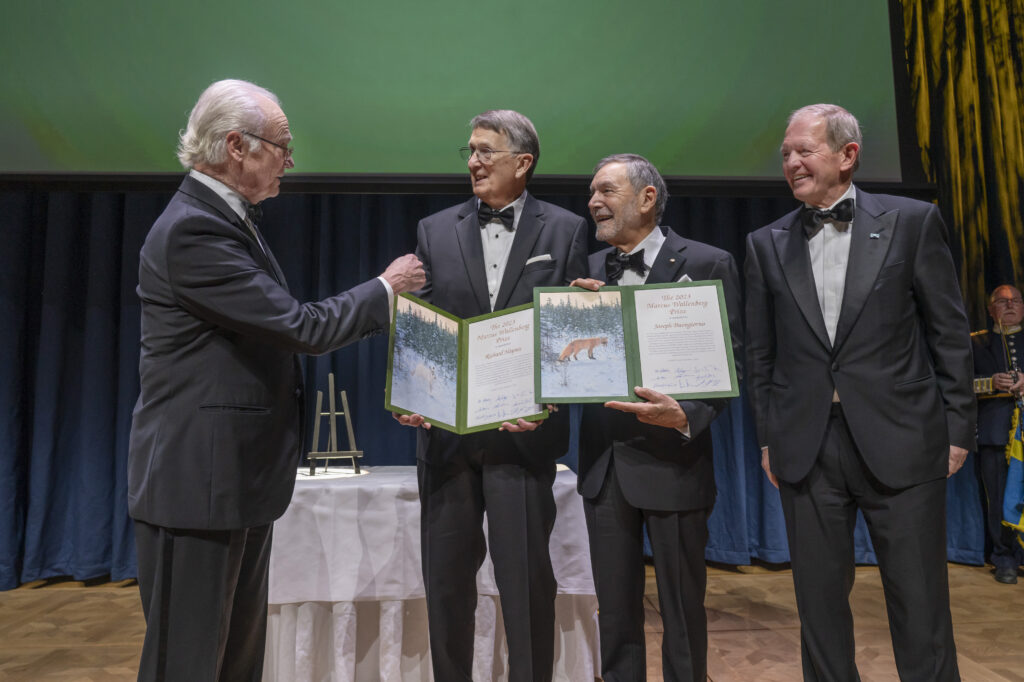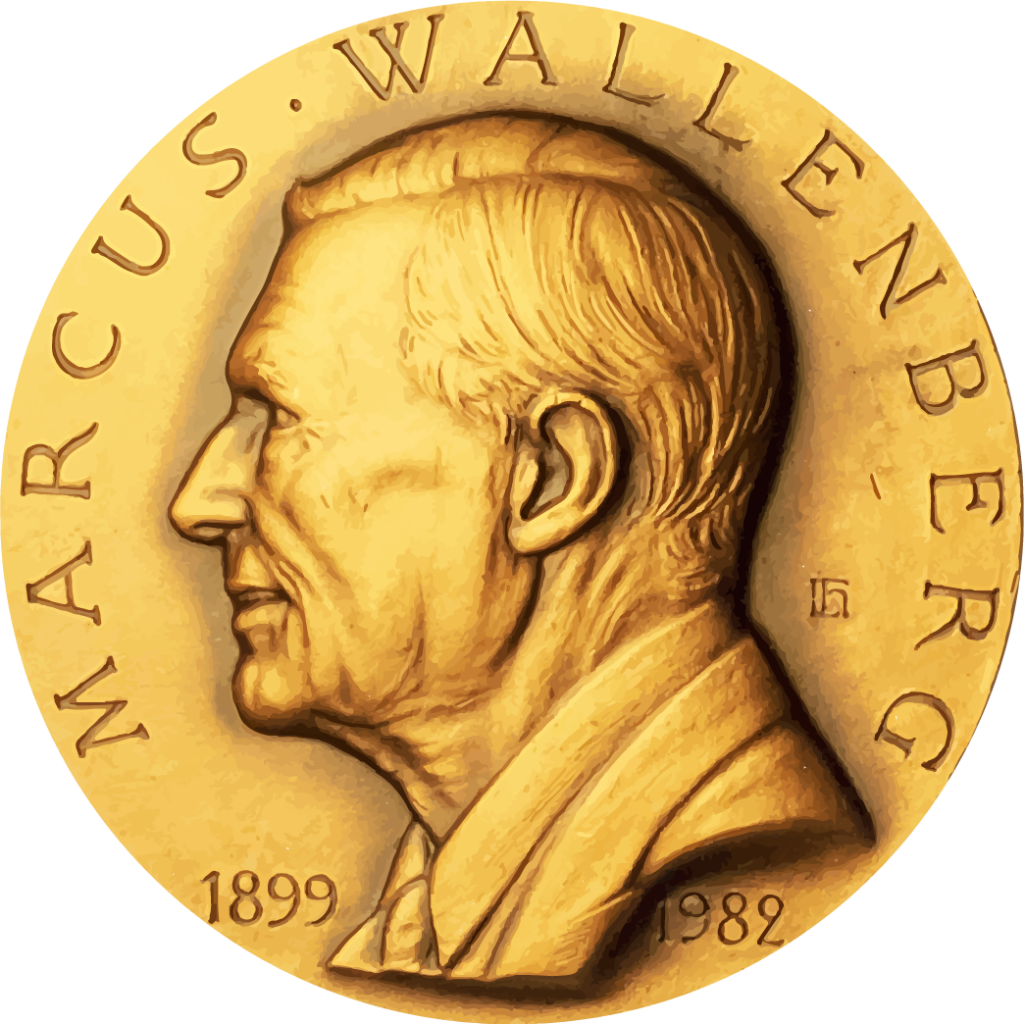
Doctors Darius Adams, Joseph Buongiorno and Richard Haynes receive the 2023 Marcus Wallenberg Prize
Economic models for integrated analysis of the forest sector
The 2023 Marcus Wallenberg Prize of SEK 2,5 million is awarded to Drs Darius Adams, Joseph Buongiorno and Richard Haynes for their development of the original and groundbreaking forest economic models TAMM and PAPYRUS and its extension to the Global Forest Products Model. King Carl XVI Gustaf presented the prize on Monday 13 November in Stockholm. Watch the short summary film.
The need to analyze the impact of policies and other factors influencing forestry and the forest industries on a global, national, and regional level is increasing. Climate change put pressures on forest as carbon sinks and as alternative to fossil raw materials. Population and income growth imply rising pressures on the demand of forest-based products all over the world. The developed models are used to analyze the impact of multiple factors such as trade regulations, climate mitigation measures, carbon pricing, forest protection measures, subsidies applied to energy supply and new bio-based products. Especially now in rapidly changing times, these models and further developed versions are highly valid and needed.
Global forests and the industry continue to face growing demands and challenges under a changing climate and new governance conditions. The further development of forest and forest sector modelling and continuing the legacy of this year’s laureates become increasingly important to guide policy making at different levels and to sustain an intelligent and sustainable development of forestry and forest industries.
European forests are currently affected by several regulative actions such as Nature Restoration Regulation and Biodiversity regulation from the EU. Understanding the economic impacts of these regulations is of utmost importance for the forest sector and national decision makers. The models created from the groundbreaking research of the prize winners have enabled development of European tools to address these questions.
Adams developed a model that included detailed timber supply routines for various types of landowners, a rough trade model for the USA-Japan lumber trade, and full coverage of the US forest products industries. However, prices were set outside the model, and inter-regional trade within the US was not included.
Haynes developed a spatial model of timber supply that outlined how much timber is available in different parts of the US, considering that demand and subsequently the price can vary depending on region. The model utilized a heuristic algorithm to figure out trade and prices at the same time. After this, Adams and Haynes co-developed TAMM (Timber Assessment Market Model), the first multi-market spatial equilibrium forest sector model.
Buongiorno’s important early contribution to forest sector modelling was the development, with his graduate students, of the model PAPYRUS, which is a multi-market spatial equilibrium sector model of the North American pulp and paper industries. It included two major improvements: it used activity analysis to characterize production technologies and applied ordinary stepwise linear programming.
TAMM and PAPYRUS have laid the basis for numerous global, national, and regional models of this kind, including the widely used Global Forest Products Model, GFPM.
Darius M. Adams, Professor Emeritus at Oregon State University, Corvallis, OR, USA. He earned his Ph.D. in Wildland Resource Science at the University of California, Berkeley in 1972.
Examples of his research areas are: Econometric studies of timber supply and demand; optimization of forest management in even-aged and uneven-aged forest stands; forest sector market responses of law regulations; perceptions of the US forest sector and implications for the RPA Timber Assessment and spatial modelling of African-European trade in tropical logs and sawn wood.
Joseph Buongiorno, Professor Emeritus of Forest Economics at University of Wisconsin-Madison, USA. Buongiorno earned his Ph.D. in wildland resource science in 1972 at the University of California, Berkeley.
Examples of his research areas are: Econometric studies of timber supply and demand of forest products; assessing non-timber values of forests; development and applications of the global forest sector model GFPM; tropical rain forest management; effects of ban on tropical log exports; comparative advantages in trade of forest products and trade impacts of exchange rate changes.
Dr. Richard W. Haynes, the US Forest Service Pacific Northwest Research Station, Portland, OR, USA. He received his Ph.D. in Forest Management in 1975, at the North Carolina State University, Raleigh, North Carolina, USA.
Haynes specialized in assessing forest resources and markets and played a central role in important events leading up to and through formulation of the Northwest Forest Plan (NWFP) and other regional conservation strategies. Examples of his research areas are: Econometric studies of timber supply and demand and welfare analysis of long-term forest products price stabilization in the US.
For more information:
Mikael Hannus, Executive Secretary, The Marcus Wallenberg Foundation, mikael.hannus@mwp.org
+46(0)70-3775702
The Marcus Wallenberg Prize is an international prize with the purpose of recognizing, encouraging and stimulating pathbreaking scientific achievements, which contribute significantly to broadening knowledge and to technical development within the fields of importance to forestry and forest industries.


